Milan is not just the fashion capital of the world; it is also a haven for those who revel in the rich tapestry of authentic Italian cuisine. The city offers an array of eateries where one can savor traditional Milanese dishes, ranging from the hearty risotto alla milanese to the indulgent cotoletta alla milanese. Known for its adherence to time-honored recipes, Milanese cuisine provides a taste of Italy’s deep culinary heritage. The city’s restaurants, whether they are generations-old trattorias or contemporary dining establishments, take pride in serving up these local specialties, ensuring an experience that is as genuine as it is delectable. Where to Eat Traditional Italian Food?
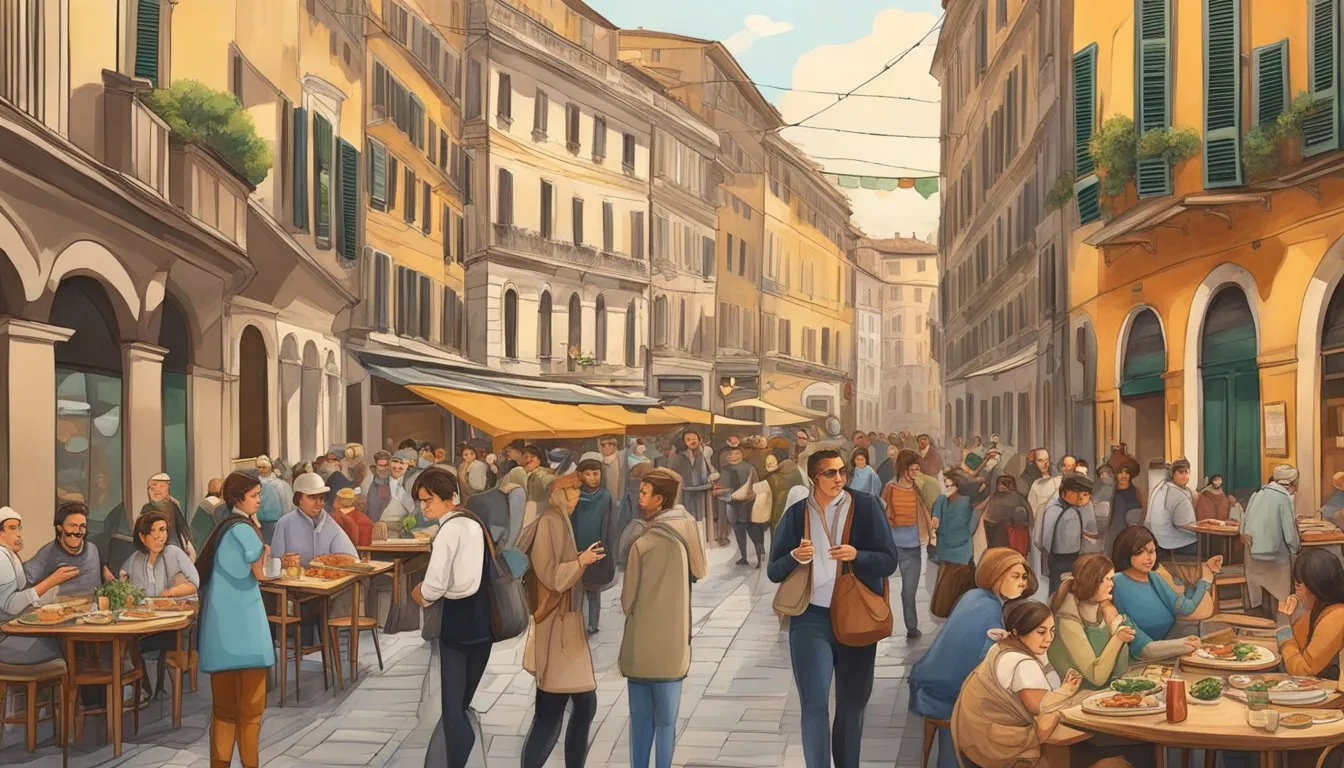
The Milanese restaurant scene encompasses a variety of settings, from intimate locations hidden away in narrow cobbled lanes to vibrant eateries overlooking bustling piazzas. Patrons are not just treated to delicious food but are also drawn into the warm, convivial atmosphere, which is synonymous with Italian dining culture. For those who appreciate the subtleties of fine food, selecting the right wine to accompany traditional dishes is a customary delight. The confluence of Milan’s historical recipes with modern culinary creativity adds a dash of excitement to the traditional fare, inviting both locals and tourists alike to explore the evolving Italian palate.
Where to Eat Traditional Italian Food
Key Takeaways
- Traditional Milanese dishes offer a true taste of local Italian heritage.
- Eateries in Milan provide a dynamic mix of historic recipes and modern innovation.
- Choosing the perfect wine pairing is integral to the authentic Milan dining experience.
Milanese Cuisine Overview
Milanese cuisine reflects the rich culinary tradition and cultural tapestry of Milan. It’s characterized by hearty dishes that incorporate local ingredients, revealing a history woven through with various cultural influences.
Historical Roots and Influences
Milano, the thriving metropolis of Northern Italy, has seen a myriad of influences shape its gastronomy over the centuries. The cuisine mirrors this history, with elements introduced by foreign dominations, including Spanish, Austrian, and French rulers. This blend of cultures has resulted in a unique cuisine distinct from other Italian regions.
Key Ingredients and Staples
The staples of Milanese cuisine include risotto, a creamy rice dish often cooked with saffron, and ossobuco, a savory braised veal shank. Cotoletta alla Milanese, a bone-in breaded veal cutlet, is another classic dish that plays a significant role. Polenta, once a peasant food, now graces tables throughout Milan as a testament to the region’s agricultural heritage. Gorgonzola, a sharp and tangy cheese, enhances many dishes with its bold flavor, showcasing Milan’s dairy craftsmanship. Milanese cooking often features local ingredients, ensuring that traditional flavors remain the heart of the cuisine. Refined over time, these dishes like mondeghili, Milanese meatballs, continue to be staples and are served in many local eateries that celebrate the essence of Milanese culture.
Traditional Milanese Dishes

Milan’s culinary scene reflects its rich cultural heritage with a range of traditional dishes that are deeply ingrained in the city’s identity. These recipes have been passed through generations and continue to be a central part of Milanese cuisine.
Icons of Milanese Cooking
Milanese cooking is celebrated for its robust and comforting flavors. Among the most cherished dishes, Cotoletta alla Milanese stands out—a sumptuous breaded veal cutlet fried in butter to golden perfection. This iconic dish showcases the simplicity and richness of Milanese gastronomy. Similarly, traditional recipes like Ossobuco—braised veal shanks with vegetables, white wine, and broth—exude the essence of Milanese comfort food.
Risotto Alla Milanese
Risotto alla Milanese is the quintessence of Milan’s culinary artistry. This vibrant yellow rice dish owes its color to saffron and is frequently touted as one of Milan’s must-eat specialties. The creamy texture and subtle flavors are a testament to the city’s love for good food that celebrates local ingredients and traditional recipes. It’s often served as a prized dish in local eateries and 10 Typical Milanese Trattorias that continue to charm both locals and visitors with their dedication to the authentic taste of Milan.
Milan’s Restaurant Scene
Milan’s culinary landscape offers a wide array of dining experiences, from high-end restaurants boasting Michelin stars to quaint trattorias with generous plates at reasonable prices.
High-End Milanese Dining
For those seeking a luxurious dining experience in Milan, Michelin-starred restaurants like Berton set the gold standard. Andrea Berton curates a menu that epitomizes modern creativity while maintaining the essence of traditional Italian cuisine. Dishes are thoughtfully crafted, with every ingredient singing with flavor. Visitors to Milan seeking the best restaurants for an upscale meal will find Berton’s establishment a must-visit.
Hidden Gems with Reasonable Prices
Beyond the glitz of Michelin stars, Milan is dotted with hidden gems where good food can be enjoyed without breaking the bank. Trattoria Mirta offers an authentic Milanese experience with dishes that are full of flavor and history. Another noteworthy option is Antonio’s Trattoria, a beloved spot where locals and visitors alike savor hearty Italian fare. For a cozy atmosphere and traditional dishes, La Madonnina cannot be overlooked. Not only do these eateries provide delectable Italian cuisine, but they also do so with reasonable prices in mind.
For those in pursuit of both authenticity and value, Trattoria Arlati and Ratanà present menus brimming with local specialties. These restaurants reflect Milan’s true culinary spirit, where the love for food is evident in every bite.
Wine and Pairings

Milan’s dining scene is renowned not only for its exquisite dishes but also for the exceptional wines that accompany them. From robust reds to sparkling whites, the right pairing can elevate a traditional Italian meal to an unforgettable culinary experience.
Lombardy’s Wine Culture
Lombardy is celebrated for its diverse wine offerings, which play a significant role in the Mediterranean dining tradition. The region produces a variety of wines, including the well-regarded Franciacorta, a sparkling wine that rivals Champagne. For those enjoying Milanese staples such as risotto alla Milanese, a glass of Franciacorta adds the perfect touch of elegance. Oenophiles can explore a carefully curated selection at El Buscia, a wine bar that specializes in sparkling wines and exemplifies the Lombardian wine culture.
Selecting a Natural Wine for Your Meal
When it comes to natural wine, Milan’s eateries offer choices that resonate with organic and biodynamic wine enthusiasts. These wines, known for their minimal intervention winemaking processes, pair exceptionally well with the city’s hearty and rustic cuisine. A bottle of natural red wine, boasting bold flavors and a harmonious balance, complements a dish of cotoletta alla Milanese beautifully. Rovello 18 treats its guests to an extensive selection with options that suit every palate and price point, from an affordable Dolcetto d’Alba to a prestigious aged Barolo, as evidenced by their impressive collection.
Exploring Dietary Variations
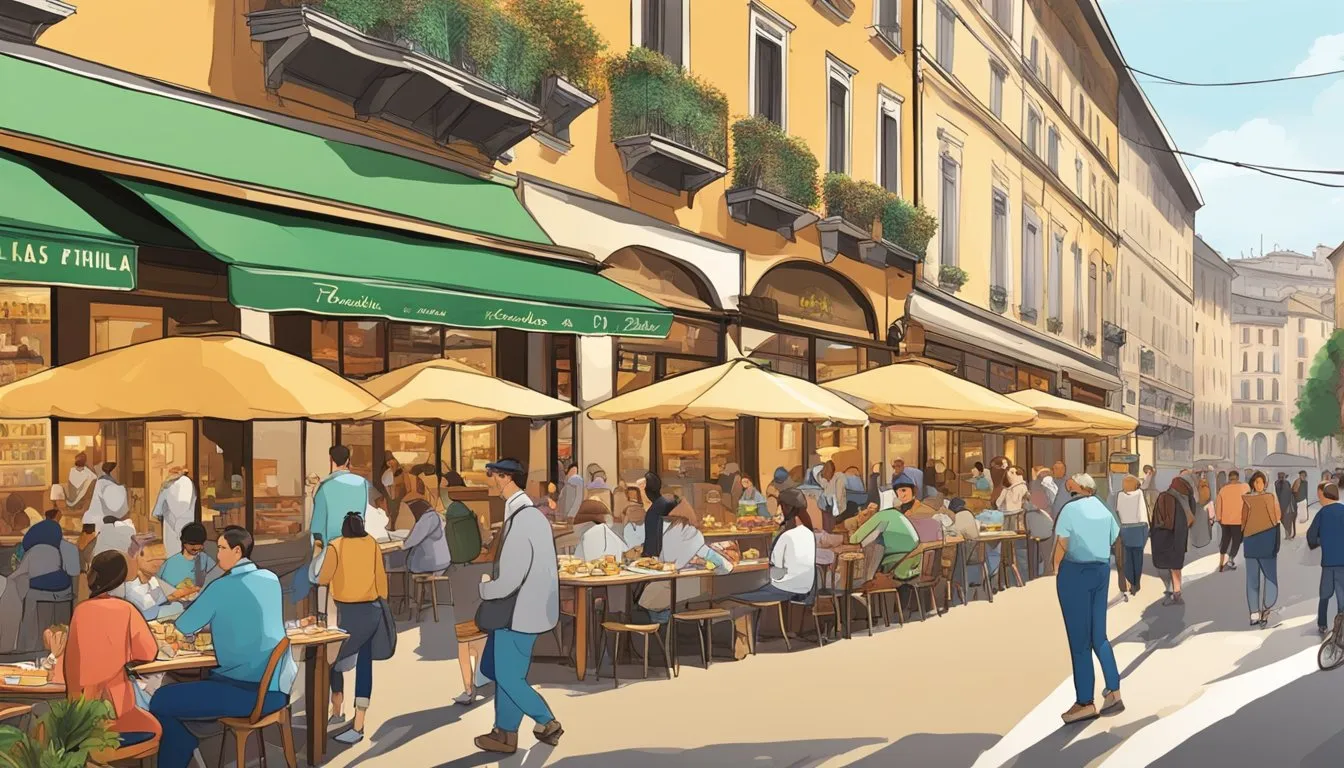
Milan’s culinary scene offers an array of options catering to diverse dietary preferences, including vegetarian and seafood choices that maintain the essence of traditional cuisine.
Vegetarian-Friendly Milanese Food
In Milan, vegetarian options blend the rich flavors of Mediterranean ingredients with classic Milanese cooking techniques. A prime example is the saffron-infused Risotto alla Milanese, which traditionally features bone marrow but can be enjoyed in its vegetarian form by simply omitting the meat. Trattorias across the city understand the need for inclusive dining experiences and often suggest vegetarian adaptations of dishes like the iconic Osso Buco, substituting vegetables or cheese for the meat while still capturing the dish’s hearty essence.
Seafood Adaptations in Traditional Dishes
While Milan is not on the coast, it incorporates seafood from nearby lakes and the Mediterranean into its cuisine. A notable adaptation of conventional Milanese dishes is the use of seafood in recipes that traditionally include meat. For instance, restaurants might offer variants of the typical Cotoletta alla Milanese where fish, such as a breaded and fried fillet, replaces the veal cutlet, offering a lighter yet equally delicious experience.
Modern Twists and Fusion
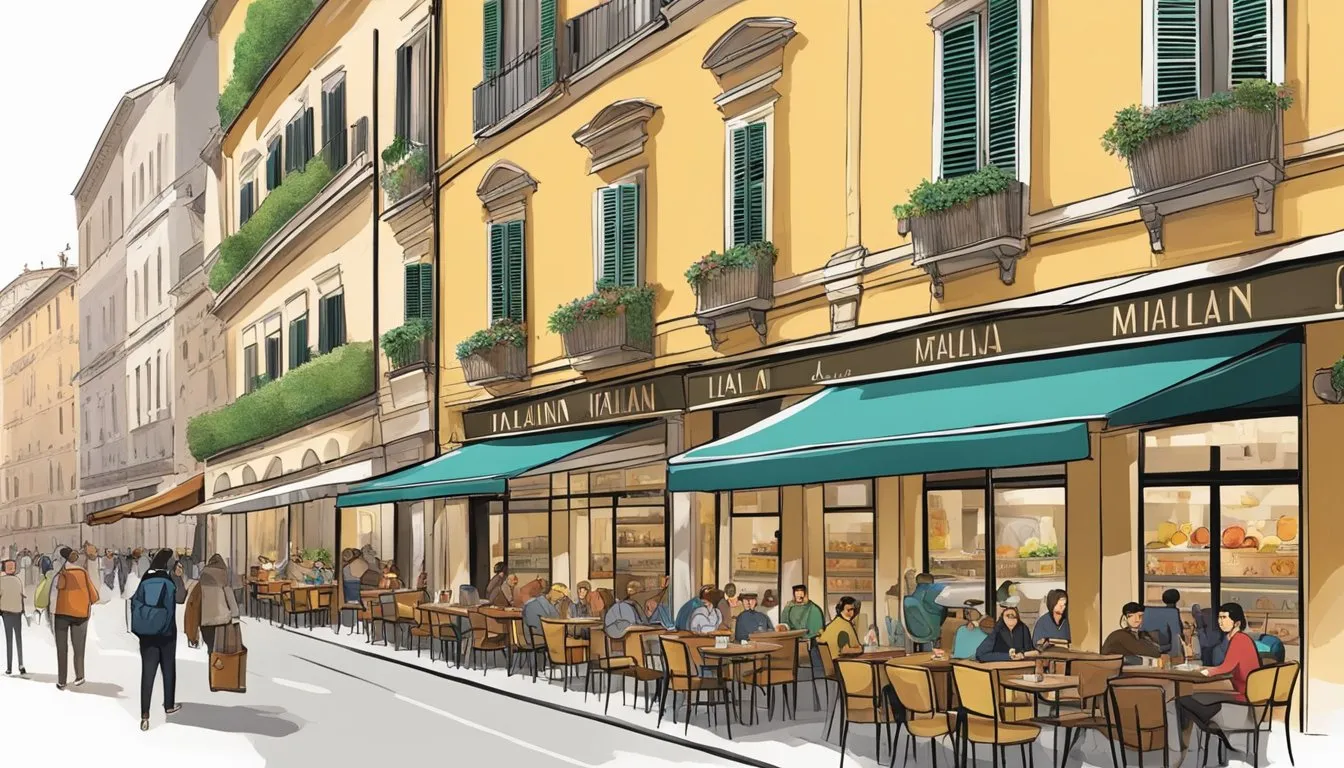
Milan’s culinary scene is not just steeped in tradition; it also embraces modern innovation and global influences. Several eateries offer a fresh take on classic Italian dishes by infusing them with international flavors and presenting new creations by contemporary chefs.
Incorporating International Flavors
Milan is a melting pot of cultures and this diversity is reflected in its cuisine. Restaurants like Risoelatte offer a nod to international influence by introducing items like tiramisu with a twist, perhaps incorporating Chinese five-spice or other non-traditional ingredients.
Another example is the inclusion of exotic truffles in classic desserts, a fusion that caters to both traditional Italian palates and those seeking something innovative. These restaurants balance the richness of Italian staples with the subtleties of international flavors, creating new taste experiences.
Contemporary Milanese Chefs and Their Creations
Milan’s culinary innovators are crafting dishes that respect Italian tradition while showcasing their creativity. For example, the chefs in establishments listed on Eater’s 38 Best Restaurants often experiment with new combinations, presenting dishes that may pair traditional Milanese veal cutlets with unexpected ingredients or sauces influenced by international cuisines.
The chefs at these venues channel their creativity into every plate, redefining what diners expect from Italian cuisine. By doing so, they remain true to the essence of the cuisine while translating it into a language that a modern audience can appreciate and enjoy.
Conclusion
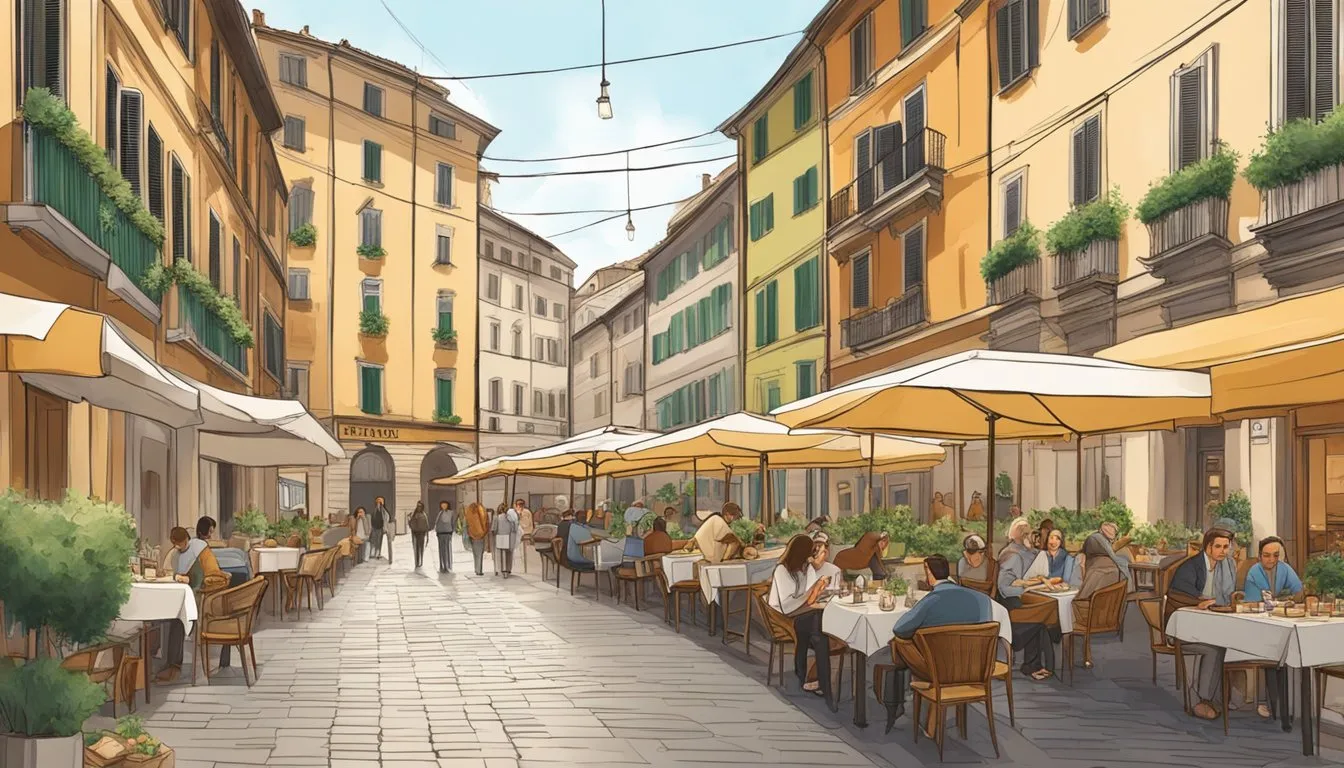
Milan offers a variety of dining options for those eager to enjoy traditional Milanese cuisine. Visitors can find a collection of authentic restaurants where the essence of Milan’s culinary heritage is celebrated. For a true taste of local dishes, one might consider visiting places like Osteria Tajoli, known for its rich history and connection to Milanese culture. Here, diners can immerse themselves in the flavors that have shaped the region’s gastronomic identity.
For a more comprehensive experience of Milanese hospitality and cuisine, there are numerous trattorias and osterias, such as Osteria alla Grande, recognized for their classic dishes. Patrons savoring their meals at these establishments are assured to enjoy a culinary journey reflective of Milan’s time-honored traditions.
Additionally, for those seeking an innovative twist on Italian classics, eateries like Dry in Via Solferino have pioneered the combination of gourmet pizza with sophisticated cocktails, offering a modern dining experience rooted in traditional flavors.
When planning a culinary adventure in Milan, it is essential to consider these establishments that are custodians of Milanese culinary traditions. They promise not just a meal, but an authentic Italian cultural experience. Whether it is a local trattoria with a storied past or a contemporary restaurant that honors classic techniques, Milan’s dining scene caters to all palates seeking the real taste of Italy.
Frequently Asked Questions
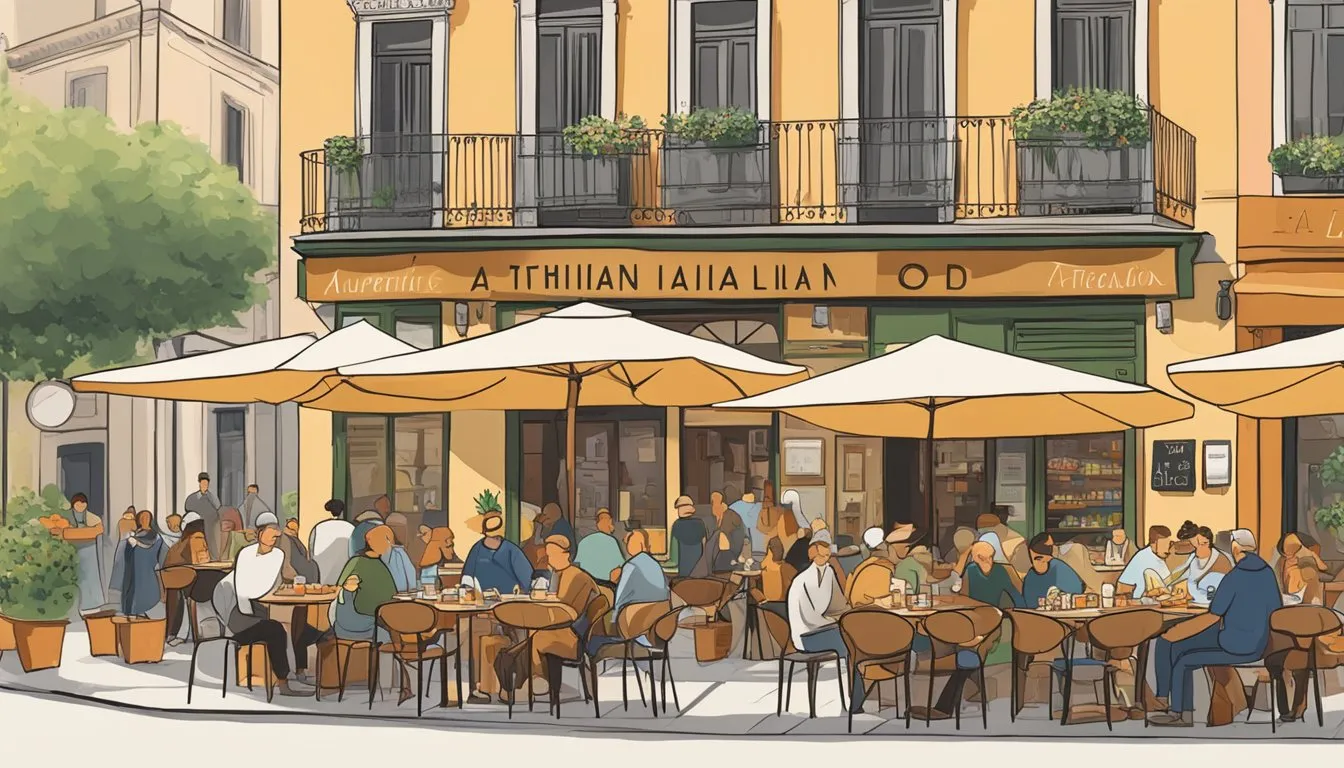
Milan offers a plethora of dining options for those in pursuit of authentic Italian cuisine. This section aims to answer common queries regarding the best traditional Italian eateries in the city.
Which restaurants offer the most authentic Milanese cuisine?
For an authentic taste of Milanese tradition, one might consider Risoelatte, a cozy spot evoking the Milan of the 1960s. Their menu honors the simple, yet classic Milanese staples, including the famous rice and milk dish.
What are the top-rated traditional Italian restaurants in Milan?
Restaurants like Osteria dell’Acquabella are applauded for serving all the traditional favorites. Despite its bustling atmosphere, it maintains attentive service, making it a top choice for traditional Italian dining.
Where can one find hidden gem eateries serving traditional Italian dishes in Milan?
Hidden gems often lie off the beaten path, but they provide an unparalleled dining experience. While specific names may not always be prominent, local inquiries and exploring Milan’s less touristy neighborhoods can lead to delightful discoveries.
What are some must-try Milan specialties and which restaurants serve them?
To truly embrace the Milanese culinary scene, one cannot miss trying Risotto alla Milanese. Local eateries such as La Pesa have been perfecting this saffron-infused dish since 1902, offering a rich taste of local flavor.
Can you recommend establishments in Milan frequented by celebrities for authentic Italian meals?
Celebrity hotspots might not always advertise their elite clientele, but high-end eateries such as Savini Milano 1867 are known to host celebrities looking to enjoy finessed Italian cuisine in an opulent setting.
Where in Milan can I experience dining like a local with genuine Italian food?
Exploring local districts and asking Milanese residents can lead to places like neighborhood trattorias where one can enjoy genuine Italian food away from the tourist crowds. These local establishments pride themselves on serving homemade dishes passed down through generations.

